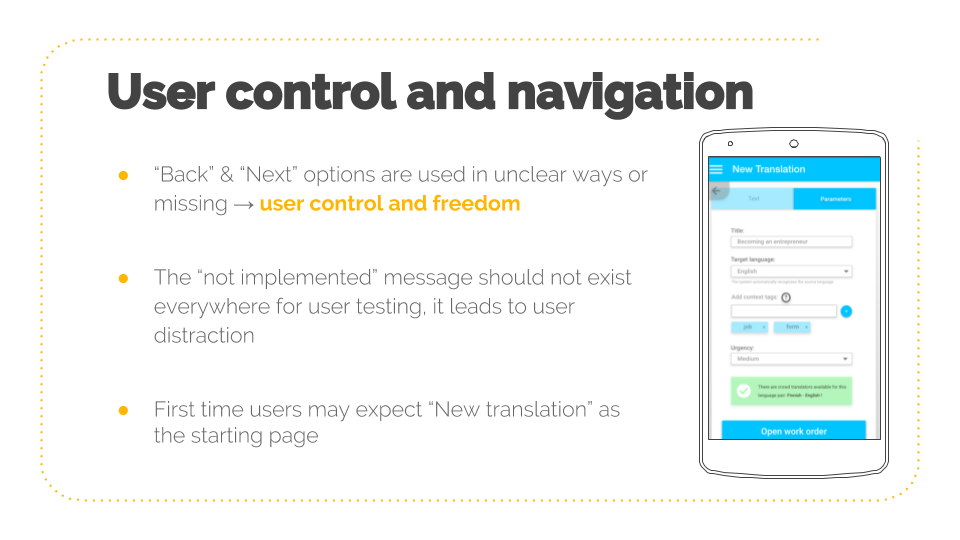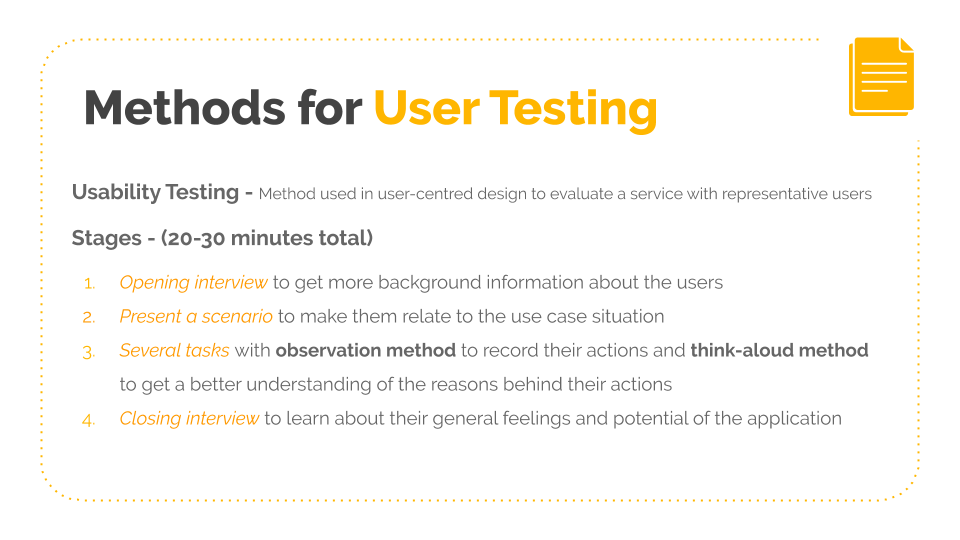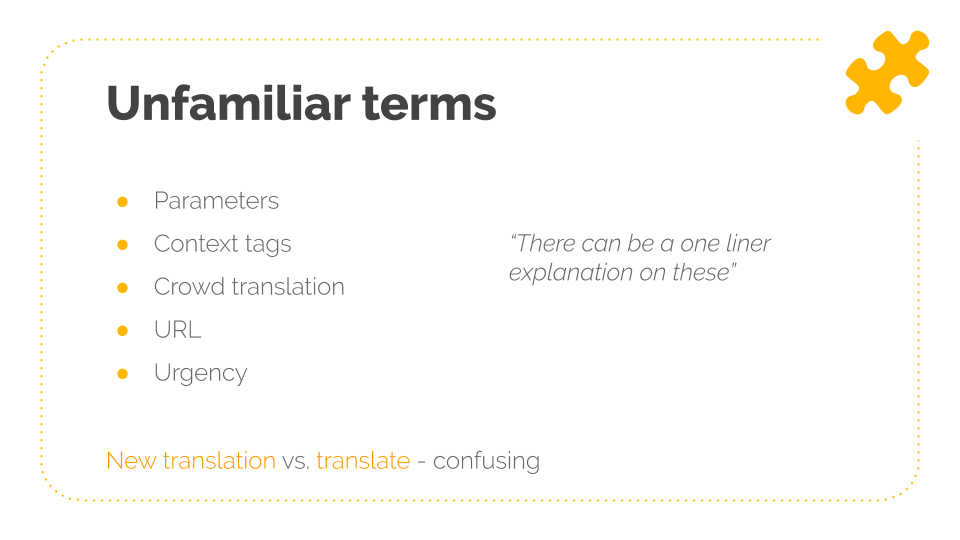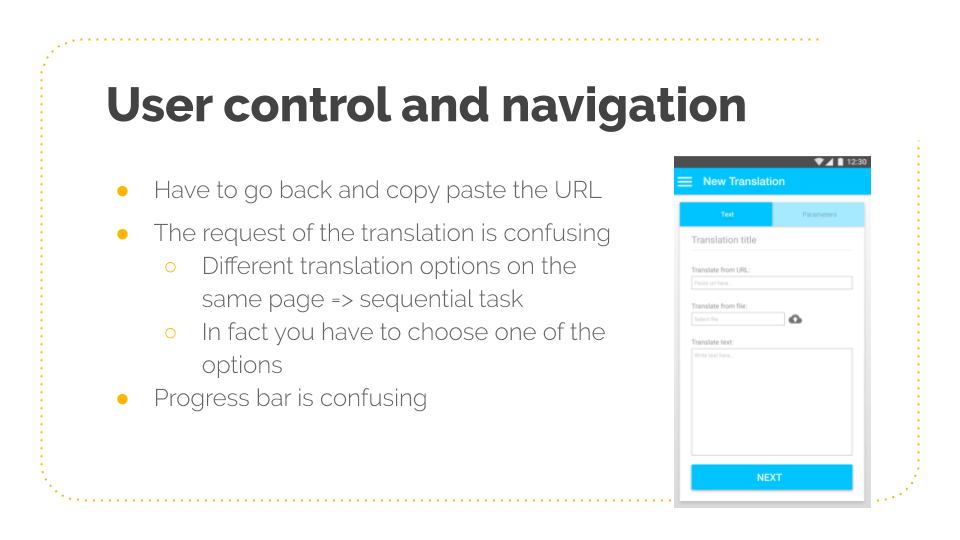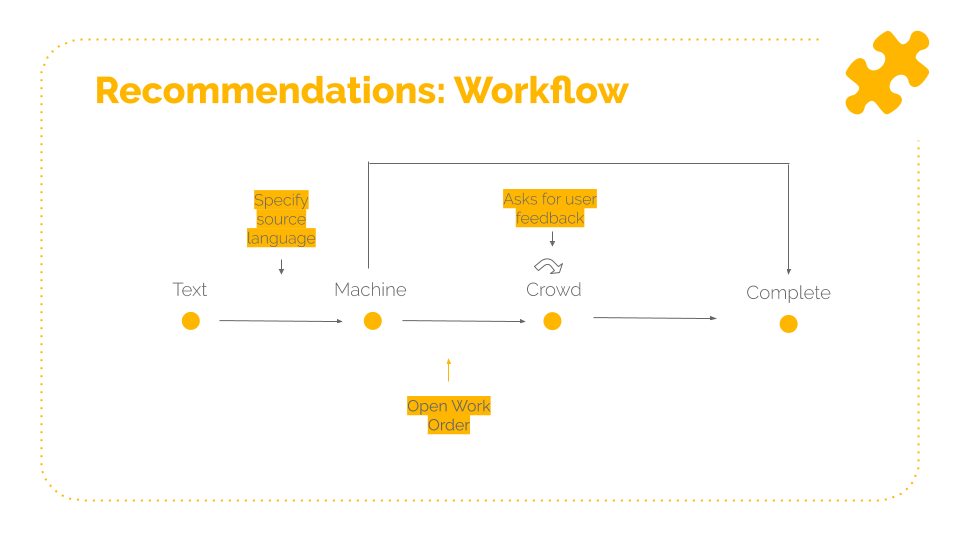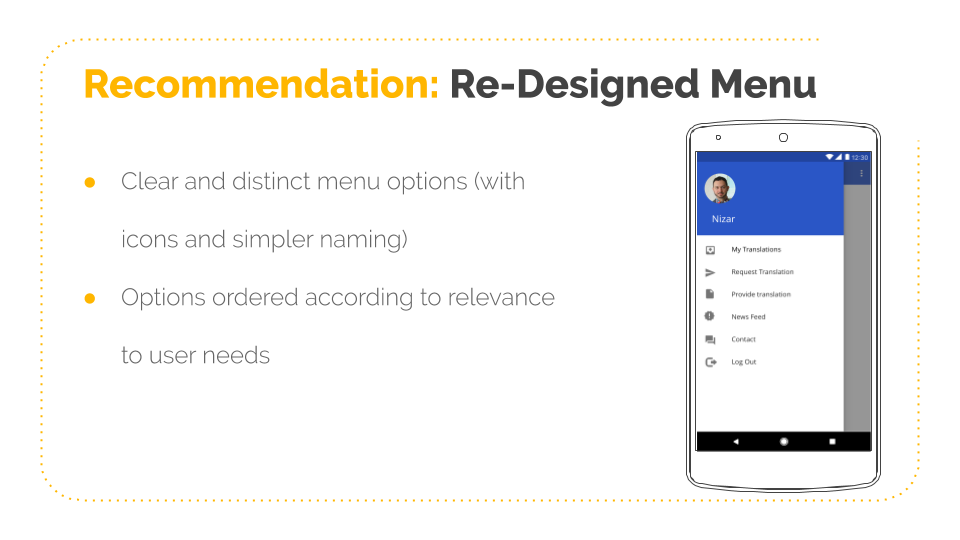
ERICS Translation App Evaluation
Usability evaluation / Crowd-sourcing ToC app / User testing
ERICS is the European Refugee Information and Communication Service, which has been developing a translation service for refugees and migrants with non-fluent language skills. The service includes machine, and if requested, crowd-sourcing translation. The official available version of the project is based on Crowdee, which is a tool developed by partners of the project in Berlin. This official version, works as follows:
- Text is submitted to the service to be translated
- The service splits the text that needs to be translated into paragraphs
- Each paragraph is translated by a different person, where each person is given a monetary compensation per paragraph translated
Apart from the official version, there is an alternative version being designed, of which we will be working on the evaluation. This alternative version is being considered to provide a fresh perspective on user-centered design and what is possible for this application in the mobile space. The version is targeting daily use of application for mini tasks that target users need to take on, by being a mobile solution. Our goal is to identify usability issues with the alternative version prototype and report our findings to the designer for iteration of the design.
Understanding the app
It is a translation app for refugees and migrants, to help them have better understandings in their daily life.
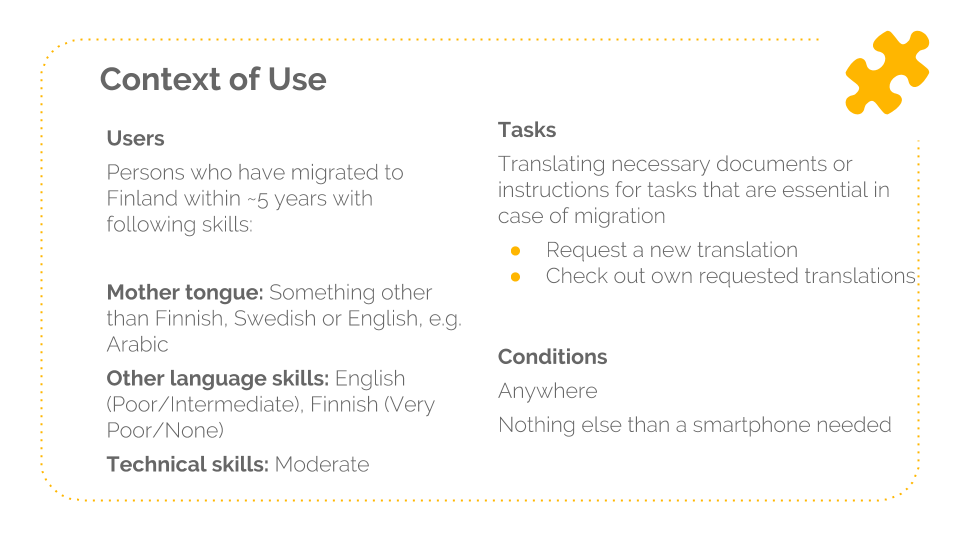
Expert Evaluation - Cognitive Walkthrough
We conducted cognitive walkthrough in the beginning to understand the workflow of the app and how users will react first time when they use the app. We tried to think in the persona’s perspective and divide tasks into actions based on stories in scenarios description. Then each of us in our team went through the actions and ask ourselves these four questions:
- Will the user try to achieve the effect that the subtask has in stock?
- Will the user notice that the correct action is available?
- Will the user understand that the wanted subtask can be achieved by the action?
- Does the user get appropriate feedback?
We took down our findings with post-its and grouped them with affinity diagraming method.
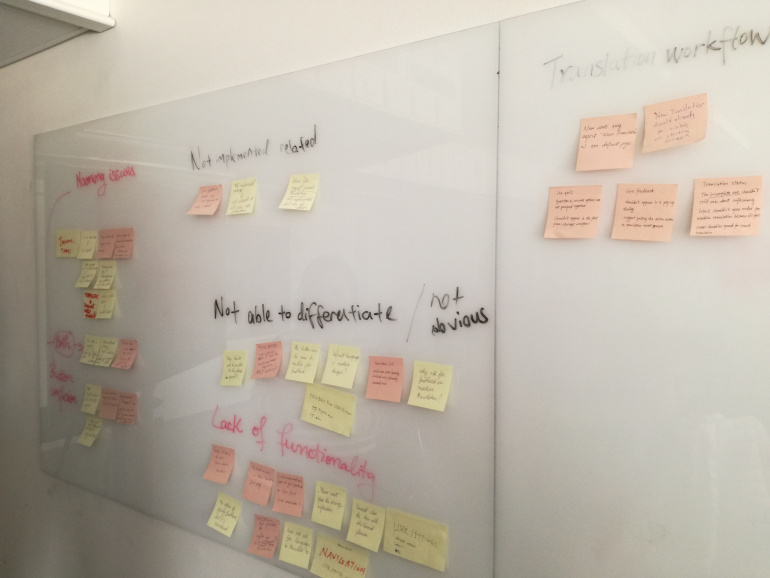
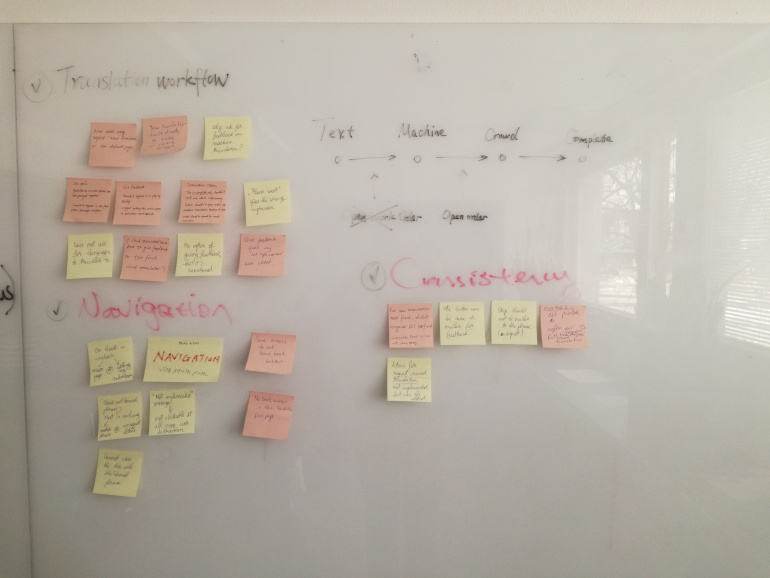
The final results are in the following five categories, merged with similar findings from the follow-up heuristic evaluation:
Expert Evaluation - Heuristic Evaluation
After cognitive walkthrough, we followed Jakob Nielsen’s 10 Usability Heuristics for User Interface Design, and conducted non-task oriented evaluation. Below are some extra findings.
User Evaluation - User Testing Plan
Our next step is to test the app prototype with real world users. We contacted some refugees and migrants help organizations for further arrangements. Below is our user testing plan:
User Evaluation - User Testing Methods
User Evaluation - User Testing Results



